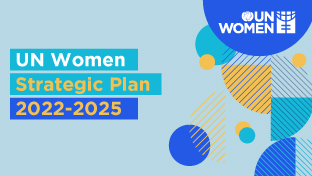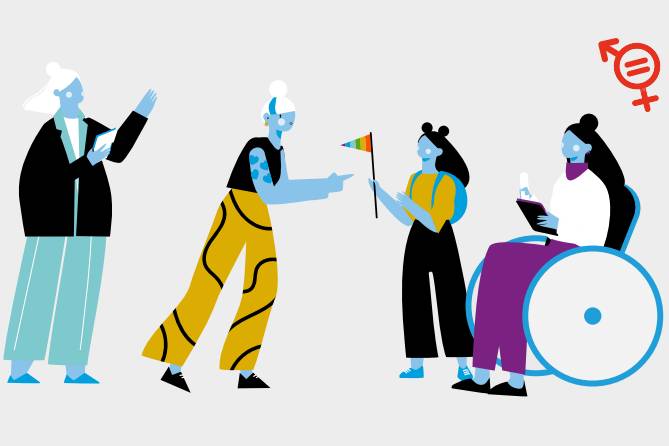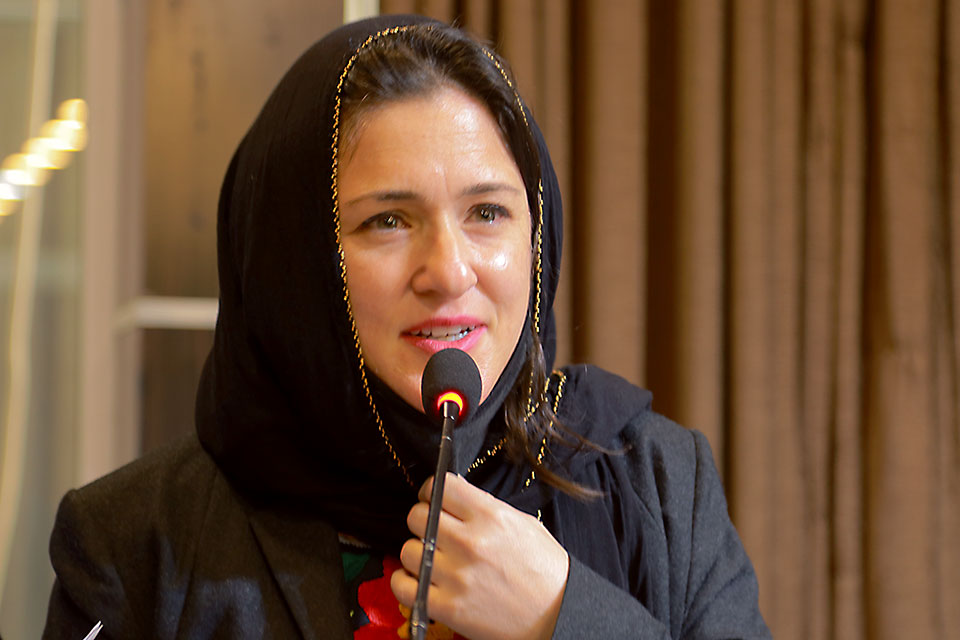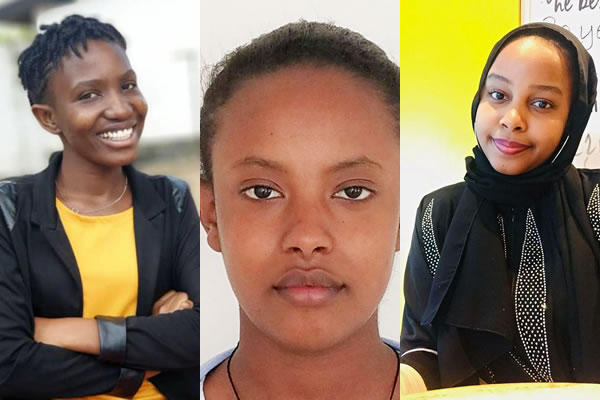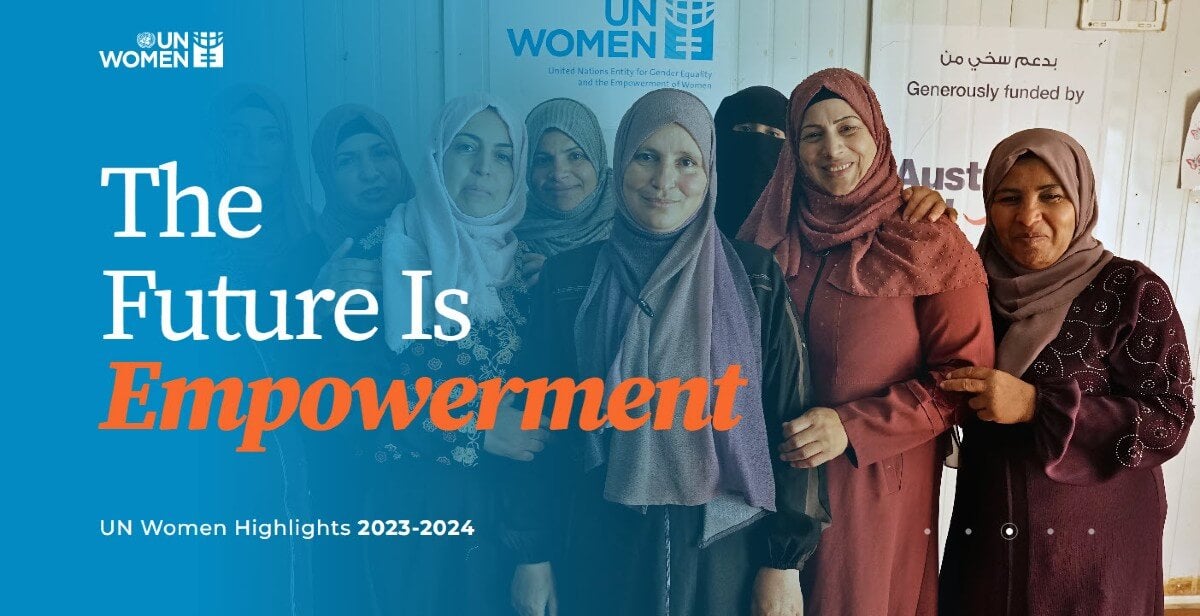How women human rights defenders are under threat worldwide
In the current global political climate, there is a broad backlash against long-standing concepts of human rights, and a rise in anti-rights movements. Women human rights defenders are often the first to come under attack.
The presence of a strong and autonomous feminist movement is the single most critical factor to drive policy change in ending violence against women. However, in the current wave of pushback, women human rights defenders are increasingly facing violence, threats, and misogynistic and gendered hate speech from state and nonstate actors around the world.
Read more below about the challenges that women human rights defenders face, and what needs to be done to defend them.
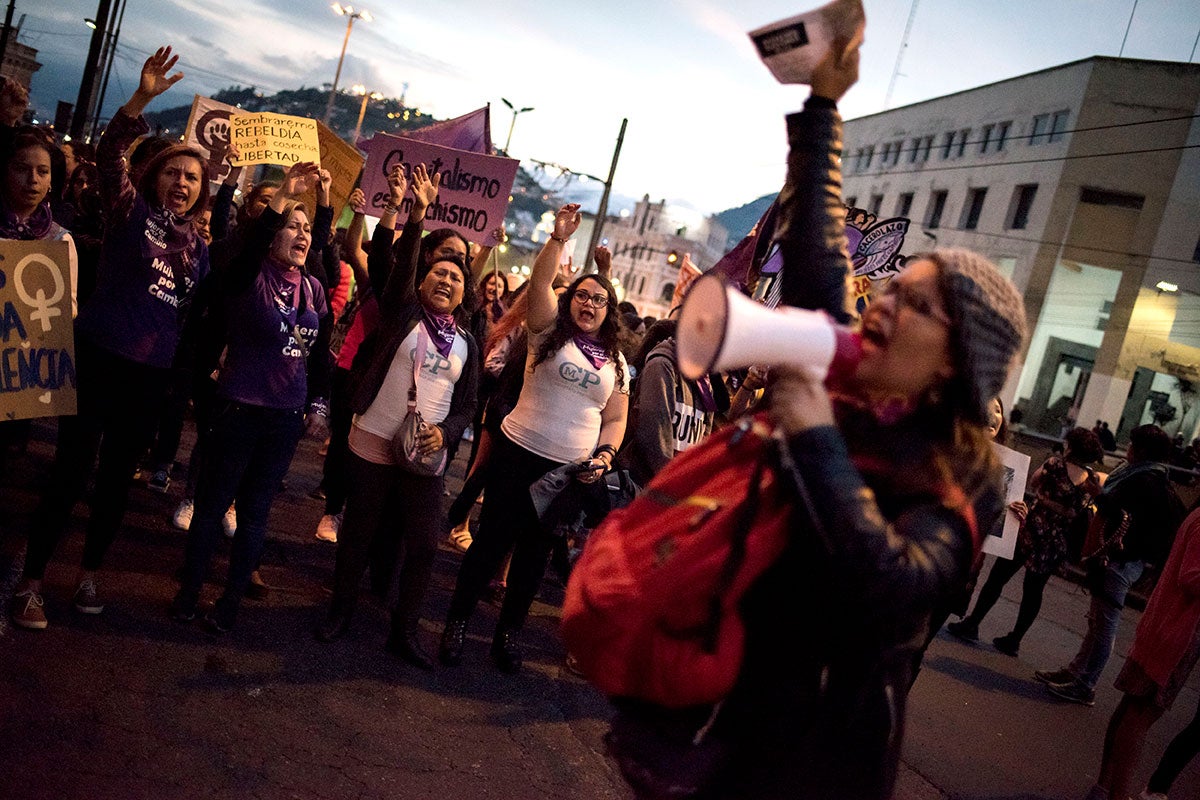
How widespread is violence against women human rights defenders and feminist activists?
The term “women human rights defenders” refers to women and girls working on human rights issues, as well as people of all genders working to promote women’s rights and rights relating to gender equality—even if the individual in question may primarily identify themselves as something else, be it a journalist, judge, grandmother, or civil society actor.
These advocates have been facing increased repression, violence, and abuse despite states’ obligations to ensure a safe and enabling environment for their work.
As highlighted in a recent report by the UN Secretary-General, anti-rights actors are increasingly using online platforms to push back against women’s rights, targeting women human rights defenders with tactics that include cyberbullying, harassment, threats of violence, gendered disinformation, and threats.
In a 2023 survey of 458 women human rights defenders conducted by the Kvinna till Kvinna Foundation, three in four respondents said that they or their organization had been threatened or harassed over their work—a 15 percentage-point increase since 2021. Almost one in four respondents received death threats; thirty-seven activists survived attempted murders.
The human rights group Front Line Defenders identified 300 activists killed worldwide in relation to their work in 2023, including 49 women. Separately, a study by the Mesoamerican Initiative of Women Human Rights Defenders (IM-Defensoras) documented 35,077 attacks against 8,926 women human rights defenders from 2012 to 2023, including 200 killings, in just five countries studied by the organization.
In some cases, state actors have engaged in direct attacks against activists and their families, including through defamation campaigns, judicial harassment, and criminalization. There has also been a worrying rise in misogynistic, sexist, and homophobic speech by prominent political leaders, normalizing violence against women and gender non-conforming persons. Some 58 per cent of Kvinna till Kvinna Foundation survey respondents said that governments and authorities were the main actors behind the threats they face.
New online spaces have also fuelled misogyny and perpetuated attitudes that normalize violence against women and girls. Actors in the so-called online “manosphere,” and the ease of creating text and visual content with artificial intelligence platforms, have led to an explosion in gendered disinformation, hate speech, dismissive rhetoric about women’s rights movements and anti-feminism as explored in the Secretary General’s report on the Intensification of Efforts to Eliminate Violence against Women. Young men and boys may be radicalized in such online spaces, and proceed to target feminist activists through gendered attacks and harassment.
Why are women activists specifically targeted for violence?
Women human rights defenders face many of the same risks faced by male activists, including threats to their physical safety and restrictions on their rights. However, women also face additional risks and obstacles, shaped by entrenched gender stereotypes and deeply held ideas and norms about how women should act.
Women human rights defenders are often perceived as challenging traditional notions of family, patriarchal structures, and gender norms and roles in society, a perception that can generate hostility from anti-rights actors, the public, the media, and other actors. For example, women human rights defenders have been accused of threatening religious values, the family, and social morals.
These risks also correlate with existing and intersecting vulnerabilities: IM-Defensoras found that, of 58 killings of women’s rights defenders between 2020 and 2022, 40 per cent of victims were trans women activists, and Indigenous and Afro-descendent women were disproportionately targeted in attacks.
Women environmental human rights defenders are at particular risk: between 2016 and 2019, 1,698 attacks against women environmental human rights defenders were recorded in Mexico and Central America, according to a recent UN Women report.
What are the effects of violence on women activists and their communities?
The threat of violence, including sexual violence, is often used to silence women human rights defenders, to undermine their work and participation in public life.
Women activists are at risk of femicide, or gender related killings, death threats, rape, acid attacks, arbitrary arrest, detention, and enforced disappearances. They have also been subjected to strategic lawsuits against public participation by businesses in attempts to intimidate and silence them. Their families are also at risk—the Kvinna till Kvinna Foundation found a substantial increase in the number of women’s and LGBTIQ+ rights activists whose family members have been attacked over their relative’s activism.
The combination of those physical and legal threats has resulted in great stress on the mental and emotional well-being of women’s rights defenders, which can further affect their work, according to a report by the Special Rapporteur on the situation of human rights defenders.
The targeting of women’s rights defenders has also taken place amid a general reduction in funding for women’s rights in recent years. Of the respondents to the Kvinna till Kvinna Foundation survey, 45 per cent said it was becoming more difficult to find funding for their work.
Furthermore, women’s rights organizations largely receive funding for specific projects, rather than for their general operations, which limits their ability to strengthen their organizational capacities and to sustain their work beyond project cycles. Funding for protection, and self and collective care, is often absent from project-based funding.
What legal protections exist for women's rights defenders?
At the international level, the right to participate in public life, including the promotion and protection of human rights, is contained in the Universal Declaration of Human Rights and Article 25 of the International Covenant on Civil and Political Rights.
The Convention on the Elimination of All Forms of Discrimination against Women, adopted by the UN General Assembly in 1979, states that governments must take all appropriate measures to eliminate discrimination against women in the political and public life of the country. The 1998 Declaration on Human Rights Defenders also states that everyone has the right, individually and in association with others, to advocate for human rights at the national and international levels.
In 2013, the General Assembly adopted a resolution specifically calling on states to protect women human rights defenders, respect and support their activities, and create a safe and enabling environment for the defence of human rights with a gender perspective.
Those resolutions, declarations, and covenants have also been accompanied by other actions at the international level, including recommendations by the Committee on the Elimination of Discrimination against Women, a UN expert body.
Local laws pertaining to the defence of human rights defenders vary by country.
According the International Service for Human Rights, 62 countries have at least one mechanism in place to protect human rights defenders. Some of these instruments are more effective than others in protecting activists, but many of them fail to take a gender perspective into account to address the specific needs of women human rights defenders.
What strategies are effective in preventing violence against women human rights defenders?
It is crucial for states to protect the rights of women human rights defenders, and repeal laws that restrict their work or discriminate against them.
States must also ensure the swift and effective investigation of intimidation, threats, violence and other attacks against women human rights defenders. Authorities should take such threats seriously, and ensure that perpetrators are brought to justice while safeguarding the dignity and security of women human rights defenders. States should also employ fast, flexible, and responsive protection mechanisms, such as urgent emergency relocation, legal aid, and accompaniment of defenders at risk.
Some proposed government policies can be seen in the Esperanza Protocol, a roadmap of policies aimed at Latin American states and supported by UN Women. That programme provides guidance to governments, the judiciary, journalists, and human rights defenders themselves on best practices when addressing threats.
Women human rights defenders also work together among themselves to coordinate on their own protection and ensure that they are knowledgeable about all potential risks.
UN Women and civil society organizations like Frontline Defenders offer courses, tools, and evidence-based reports and analysis aimed at helping activists better protect themselves and their communities. A UN Women study on the cyber threat landscape for women human rights defenders in South-East Asia also contributed to developing a tailored online course building the cyber resilience of women human rights defenders in the region.
The development of safety networks—channels of communication and coordination among women human rights defenders—can also reduce their isolation and allow them to safely to raise common concerns and share advice.
Such networks were integral to UN Women’s work in Colombia, in partnership with the Ombudsman’s office and 11 civil society organizations, which promoted self-protection and collective protection strategies, including risk monitoring and building capacity to document violations.
To this end, UN Women’s ACT Programme, in collaboration with women’s rights networks and coalitions, will convene a Global Civil Society Platform on ending Violence against Women to facilitate networking, coalition building, and enhance solidarity and collective care among women human rights defenders and women’s organizations more broadly.
That programme—along with UN Women’s other work and the contributions of civil society organizations, governments, and women human rights defenders themselves—aims to build a buffer against hostile actors around the world, so women human rights defenders can continue their vital work.

